 I’m a fan of suggested ask amounts.
I’m a fan of suggested ask amounts.
As you put the finishing touches on your year-end appeals, don’t make donors guess how much you need, or what you expect from them.
Clue people in. It’s the right thing to do.
If what you’re currently planning is some version of “please give whatever you can” or “please consider increasing your gift,” I encourage you to rethink your plan. Those phrases are vague. And vague requests yield token gifts. Or no gifts at all.
The best requests for money are for a specific purpose and a specific amount.
As in “Dad, I need $250 to buy school books.” Or “Grandma, I need $5,000 to buy a used car.” Or see the philanthropic ask examples from Oxfam and Charity: water below:
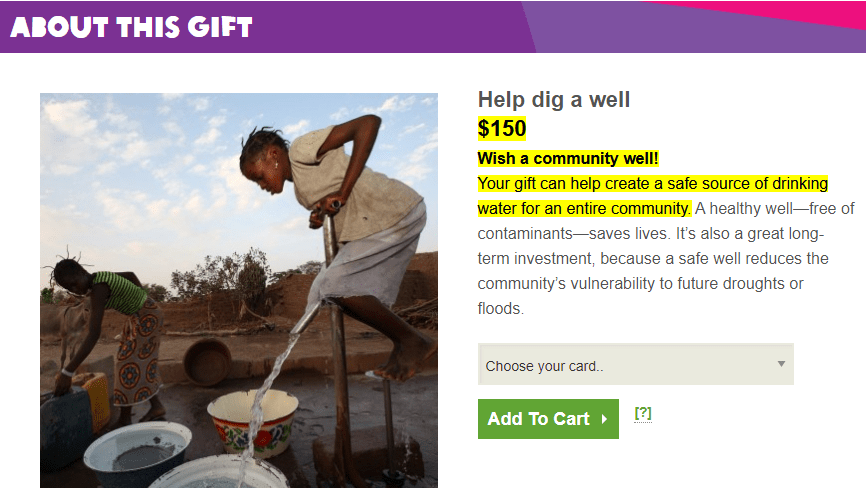
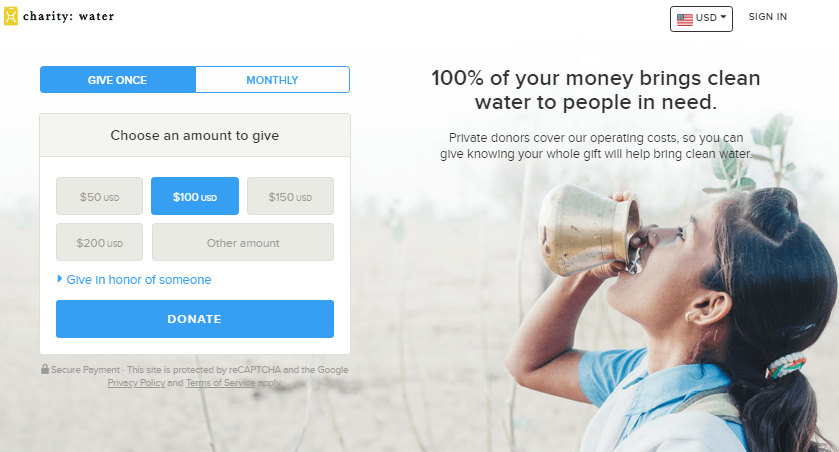
When you don’t give folks anchor amounts to hang onto, they’re apt to put your appeal aside for some time when they’ve more time to think about it.
More often than not, that ‘some time’ never happens.
So give folks an anchor of some sort, unless you want folks to stop dead in their tracks trying to figure out the right amount.
-
No one wants to feel ungenerous by giving less than is considered helpful.
-
No one wants to be a ‘chump’ by giving more than you need, or more than others like them are giving.
-
While some donors upgrade their giving without being asked, most donors wait to be asked – or at least to be offered a darn good reason to give more.
Research tells us donors will give more, on average, when they’re prompted with specific amounts. They’ll give even more when offered a choice of giving levels (download Sustainers in Focus by Blackbaud). But you have to do it the right way.
How to Choose Ask Amounts
There are a number of ways to choose ask amounts that will resonate with your donor and help them come to a favorable decision. These boil down to:
- Ask based on last gift
- Ask based on what giving at different levels accomplishes
- Ask based on a range of giving related to their current giving level
You can make specific asks in a number of different ways, which I’ll review below:
- Ask in your appeal for a specific dollar amount
- Allow donors to self-select their own dollar amount
- Ask on your remit piece using ask strings
- Ask on your online gift form using customized options
- Ask using social proof
- Ask suggesting a giving method that will tend to yield a higher gift
1. Upgrade Giving Using Specific Dollar Asks
I don’t consider a fundraising offer a real offer unless there’s an associated price tag. It’s simply asking too much of your donor to have them guess at what amount you want or need.
- Figure out what the services or program you’re asking for costs.
- Figure out what the prospect you’re asking has been giving.
- Try to make a reasonable match.
Most people like to know what things cost and what is expected. They become uncomfortable in a store or restaurant that doesn’t show prices. They’d rather at least be given a ballpark context, as in showing them a gift range chart or a budget for your program or simply an array of options from which to choose. That being said, sometimes you know your donors well enough to know they don’t like being asked for a specific amount.
2. Upgrade Giving Using Self-Selection
Rather than suggesting a specific amount, should you let the donor made their own choice? As a general rule (see above), I’m against this. However, it can definitely work. Agitator editor Roger Craver writes: “The other day I was reviewing returns from an organization who chose to use no default asking amount for its large group of $1000+ donors who receive 4 appeals a year. As in ‘My gift in the amount of $____ is enclosed.’ The results from this self-selection gift amount were solid sticking to the $1000+ gift range.”
Of course, without allowing self-selection they might have secured even higher gifts. It’s hard to know without testing. Interestingly, NextAfter did such a test online with one of their client charities. They did an A/B/C test with a lower ask string vs. a higher ask string vs. simply letting donors choose to make “a generous gift.”
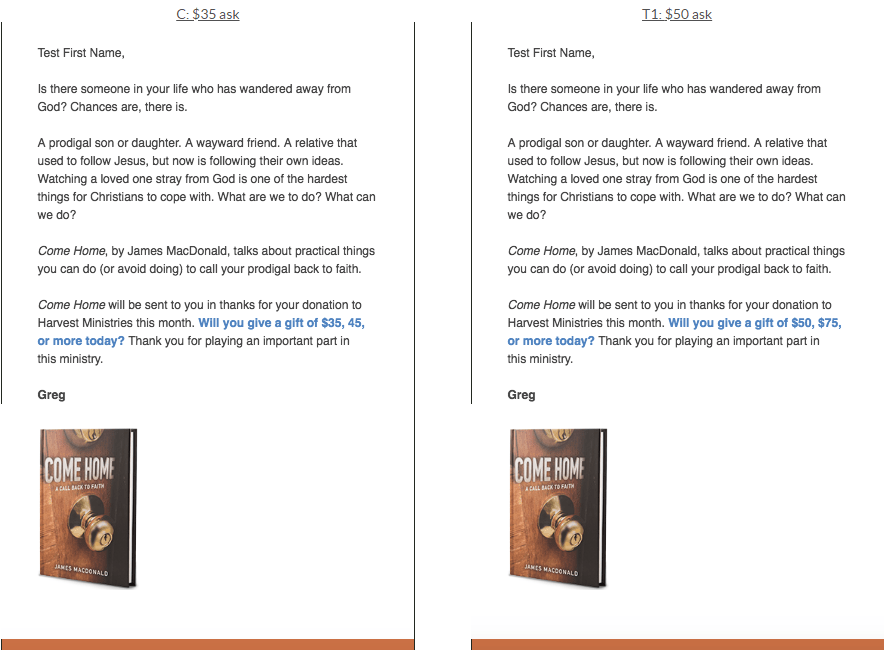
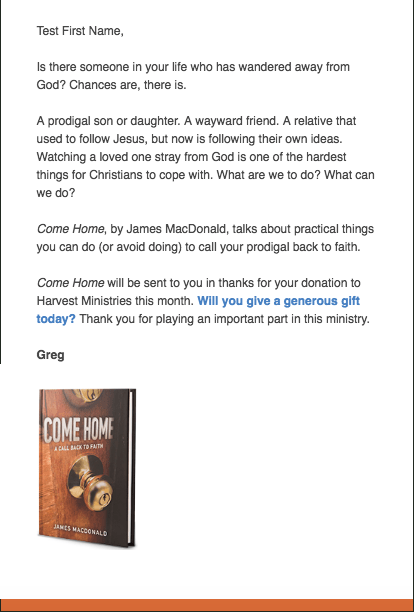
Frankly, I was shocked by the results. The email allowing donors to choose their own gift size produced a 43.1% increase in donor conversion and generated a higher average gift than the ask strings control. This goes against everything I’ve ever learned about effective fundraising, which simply shows you can’t take anything for granted. There are exceptions to everything, and you’ll only know what works for you if you try. And try again.
One thing I’ll add is that in this experiment it’s possible the ask strings presented were both simply too low. As Nick Ellinger of Donor Voice and The Science of Ask Strings puts it: “The goal of setting ask string defaults is to guess as close to the maximum amount that a person would be willing to give. When your guess is below that, you may leave money on the table; ask more and the models show you will lower response rate. Thus, letting someone choose their own gift may help them pick the right gift for them.”
3. Upgrade Giving Using Gift Arrays, Ask Strings or Defaults
When you offer giving options at various price points, should you (1) go from high to low, or (2) low to high, or (3) pre-select a “default” or “anchor” amount? The only definitive answer I can give you is whatever you do, it probably makes a difference. Exactly what difference it will make for you is something you’ll need to test.
A number of different studies provide insight into why how you array giving price options can influence folks to give more (or less) generously. Let’s take a look.
(1). Arranging gift amounts from high to low resulted in downgrades.
Research by NextAfter confirmed “People see your array as more than just an array. They also see the way in which you present the array as a point of communication from you, much like how body language communicates in real life.”
Their control used a rising suggested amount approach in a string of options, starting with $50 on the left (assuming left to right readers) and ending with $250 on the right. On mobile, amounts were stacked on top of each other with the lower amount first.
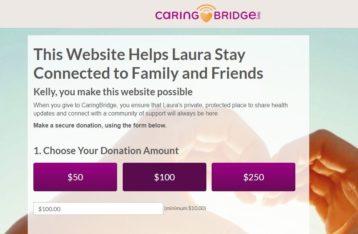 Then they reversed this order for the test.
Then they reversed this order for the test.
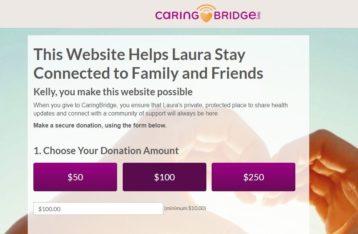
Arranging options from high to low yielded a 15.7% decrease in numbers of donations and an 11.3% decrease in average gift – resulting in a 25.2% decrease in revenue. Whoa!
Their take-away is the high-to-low arrangement subtly communicates smaller gifts are not welcome. People interpret the first option as what is desirable and acceptable. If your donor wants to give $50, and sees you appreciate $50 gifts as well as increasing gifts sizes, they might just decide to upgrade and send you $75. But if they see anything under $50 is chopped liver to you, they may think adding the incremental $25 won’t much matter because all you really notice is the big gifts.
On the other hand…
(2). Arranging amounts from high to low yielded greater revenue.
Research from psychology and marketing found that beginning with a higher price serves as an anchor that influences eventual choice. In one study researchers presented a beer menu to customers based on price in two ways: from low to high and high to low. People read the prices of the beers from top to bottom.
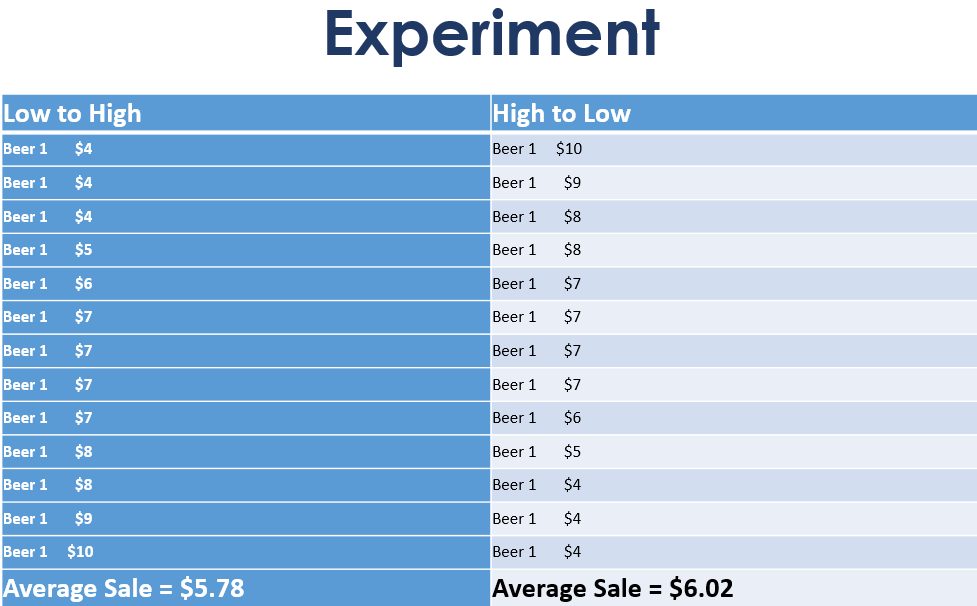
Thanks to doing nothing more than presenting the choices in a certain order, the bar made an average of $0.24 more every time someone ordered a beer from the high-to-low menu. Why does this happen? The initial price seen becomes an anchor, and all subsequent prices are compared either favorably or unfavorably.
(3). Pre-selecting a default amount increases giving.
This default anchor eliminates the need for the donor to ponder the amount, acting as a decision-making shortcut. On a printed remit piece an amount can be pre-checked, highlighted or circled. With online ask strings there is the opportunity to set a radio button default to the gift that will be made if the user makes no changes.

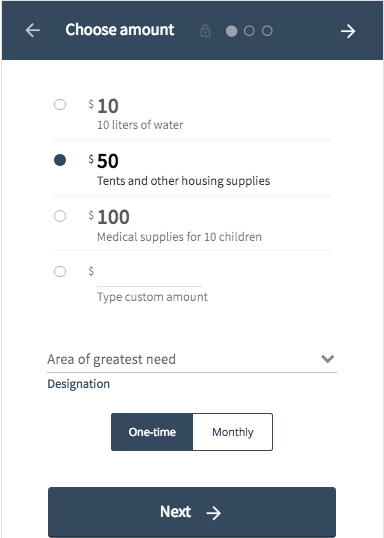
If you want to delve into the nitty gritty of setting default options, read this abstract.
(4). How to Select Amounts for Customized Ask Strings
Don’t start too small. If someone wants to give $10, they can type it into the “other” blank.
Nick Ellinger of Donor Voice is a guru on this top (see The Science of Ask Strings) and he suggests the following as a guideline:
- For current low/mid-level donors – 1 x amount*; 1.5 x amount*; 2 x amount*; other.
- For current higher-level donors – 1.5 – 1.75 x; 2 – 2.25 x; 2.25 – 3 x; other
The ‘amount’* used varies. It may be the (1) highest previous contribution, (2) most recent contribution or (3) a cumulative annual giving total. What you choose will depend on how your organization fundraises, and using common sense can help a lot. For example, if someone gives you $100 for #GivingTuesday and $400 in response to your year-end appeal, you may want to use $500 (cumulative total) as a baseline for asking next year. If they give you a $25 tribute gift and a $1000 annual gift, choosing $1,025 as a baseline will just look silly.
Another route, especially for new prospects, is to take a look at your average gift (online and offline) and make that your smallest gift level. You can do this for different segments of your database as well (which means you’ll need different response cards and donation landing pages).
4. Upgrade Giving Using Online Gift Forms
Whatever website or service you use to create online donate pages, you should be able to customize gift options by suggesting donation amounts and/or defaults, setting custom gift strings targeted to different donor/prospect mailing segments, and arraying them on the page. Also consider your donation form as part of the compelling story that is the heart of an effective fundraising offer. When you suggest donation amounts of varying sizes using impact descriptions, you make your appeal about specific outcomes rather than just money If you can find an impact that will bring your donor joy, they’ll give more.
5. Upgrade Giving Using Social Proof
People tend to default to the norm. Rather than simply setting a default anchor amount you can also let folks know “most people give X.” This triggers the persuasion principle of social proof. Research suggests we tend to be followers who look to others to let us know what is expected.
It’s up to you to set the norms. The smaller the community within which the norm is placed, the more powerful your message. Try to allude to a particular community of like-minded folks to whom your donor relates. As in “most ACLU supporters give” or “most church members give” or “most families give.” A test presented by M+R at the 2013 Blackbaud Conference found that for PETA adding “Most PETA supporters give at this level” to an ask string increased revenues by 25%.
One study by Jen Shang and Rachel Croson informed callers to a public broadcasting pledge drive that a previous donor had given $75, $180, or $300. Citing a $300 donation increased renewing members’ donations by an average of 29%. When informed that someone gavea larger donation than their previous one, their gift increased by more than $12.When told that someone gave a smaller donation than their previous gift, their gift decreased by $24.
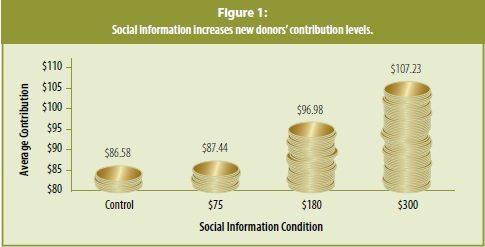
Social proof worked to upgrade giving both for new prospects and renewing donors. More amazing is the fact that gender seems to matter. In the PBS study there was a 34% increase in giving when the gender of the person who gave previously was matched to the gender of the prospective donor.
6. Upgrade Giving Using Suggested Giving Methods
Monthly Giving
Pre-selecting monthly giving on your donation page can increase conversions of monthly donations by up to 35%. Another trick is to use a pop-up box, just as folks are about to submit their one-time gift, prompting them to consider upgrading to a recurring gift. Hubspot ran an experiment that increased recurring giving by 64%. Best of all, it didn’t keep any one-time donors from giving. It just increased the percentage of donors giving monthly, which is generally a huge upgrading win.
Gifts of Appreciated Stock
This is a terrific upgrade strategy, because gifts of stock can cost a donor less than a gift of cash. Many organizations fail to suggest stock gifts. Consequently, donors fail to consider this as a giving option. Here’s how it works:
- Donor buys stock 10 years ago for $100.
- Today, that stock has appreciated in value to $1,000.
- Were they to sell the stock, they’d have a $900 capital gain.
- Depending on their income bracket, they’ll owe 15% of 20% of this gain in capital gains taxes – or $135 – $180 – if they sell the stock.
- If they give away the stock, they’ll avoid the tax and your charity will receive the full $1000 FMV of the security.
Net/net, their $1000 gift will cost them only $865 o3 $820. Sometimes donors who were thinking of giving a bit less (say a $750 gift) will upgrade when they realize the philanthropic power of their gift of stock.
Gifts from Donor Advised Funds
It can’t hurt to ask folks if they have a Fund, and if they’d like to make a distribution to you from this Fund. In Major Donor Fundraising: What to Know about the New Tax Law I wrote that some of your donors may have decided to “bunch” donations in one year in order to make the 2017 tax law work in their favor when it comes to taking tax deductions. So… now they’ve got a DAF filled with money just waiting to be distributed! When you approach them for a gift this year, they may just have forgotten this little ‘burning pocket.’ It’s a painless way for them to give, and you may end up with a larger gift than you’d otherwise have received — just because you gave them a reminder!
For additional donor upgrade strategies, see Top 10 Ways to Upgrade Nonprofit Donors.
Interested in More Year-End Fundraising Tips?
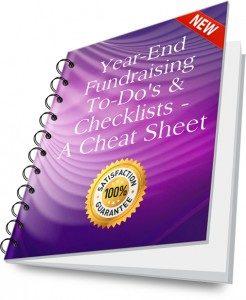
63 pages filled with year-end fundraising tips in this comprehensive Solution Kit
You’ll find plenty of tweaks to boost your results, in many cases quite significantly. I’ll bet you can find just one or two strategies that will improve your results, perhaps in ways you may not have imagined. The only way you lose is by not trying.
Get my Year-End Fundraising Solution Kit. It’s filled with tips and checklists to assure you don’t miss a trick. Everything you need to assure you get, and keep, the most donations possible this year. Not satisfied? All Clairification products come with a 30-day, no-questions-asked money-back guarantee.
Photo by me of street art on boarded up business, San Francisco.





